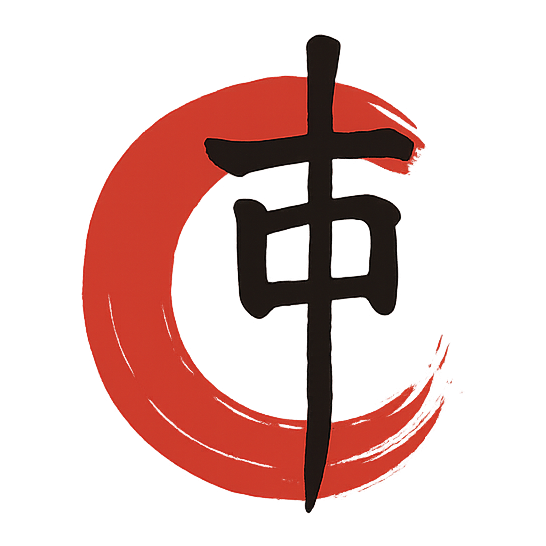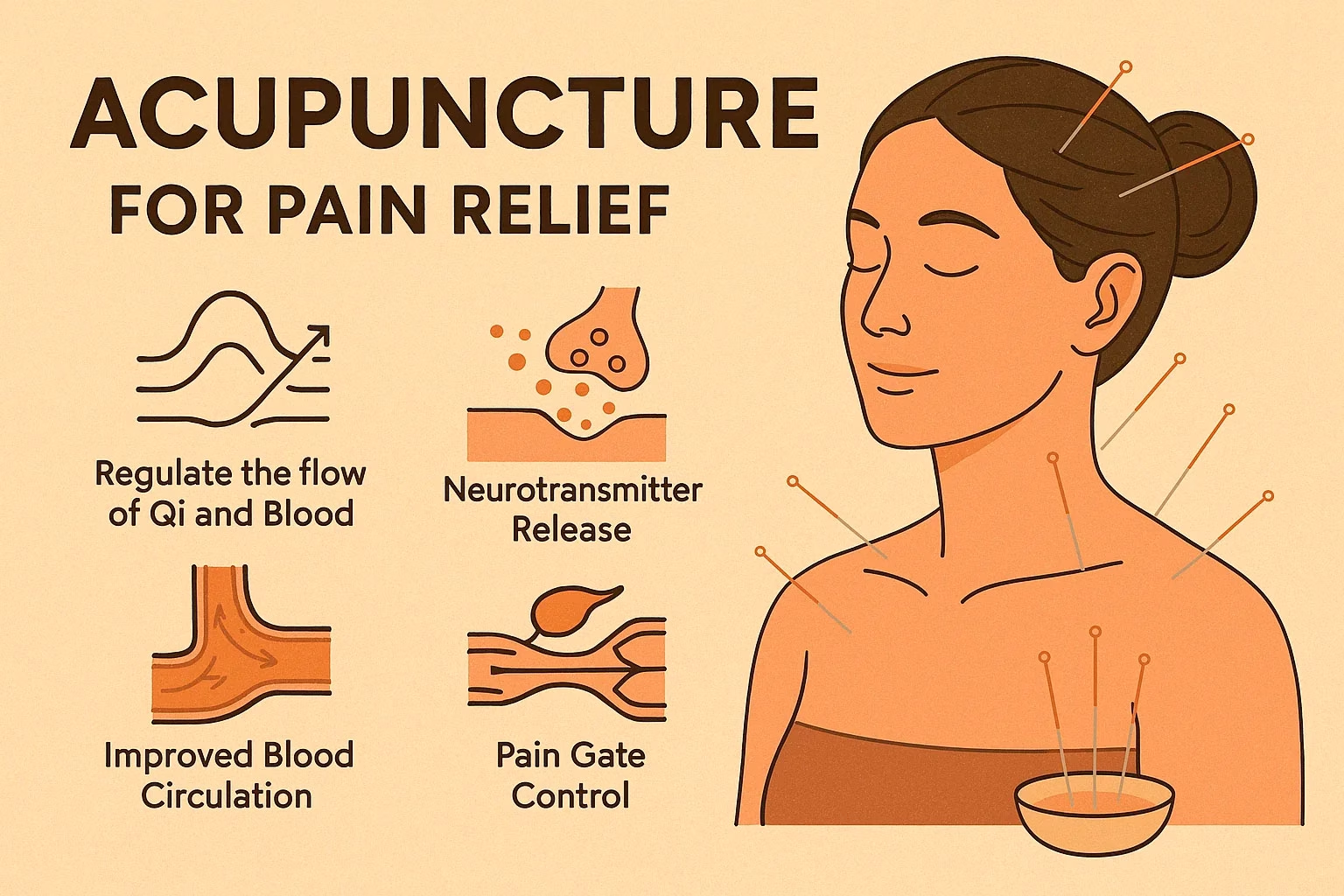Acupuncture is one of the most widely recognized and practiced forms of Traditional Chinese Medicine (TCM), particularly when it comes to managing pain. For thousands of years, acupuncture has been used to treat a variety of ailments, especially chronic pain caused by conditions such as arthritis, back pain, migraines, and muscle tension.
While the mechanism of acupuncture remains an evolving area of research, its clinical efficacy in pain management is well-documented. This article explores how acupuncture works to alleviate pain, its theoretical foundations, and how it is applied in practice.
🔶 Theories Behind Acupuncture for Pain Relief
In TCM, pain is understood as the result of Qi stagnation, Blood stasis, or a disruption in the smooth flow of Qi and Blood through the body’s meridians (energy pathways). Acupuncture works by stimulating specific points along these meridians to:
- Regulate the flow of Qi and Blood
- Remove blockages (e.g., stagnation, cold, dampness)
- Strengthen the body’s healing ability
By placing fine needles into specific acupuncture points, the practitioner aims to restore balance, promote circulation, and relieve pain.
🔶 Mechanisms of Action: How Acupuncture Relieves Pain
Modern research provides insight into how acupuncture works to reduce pain:
1. Neurotransmitter Release
Acupuncture stimulates the body’s nervous system, causing the release of endorphins, the body’s natural pain-relieving chemicals. It also increases the production of serotonin and dopamine, which help regulate mood and reduce pain perception.
2. Improved Blood Circulation
Acupuncture helps enhance blood flow to stagnant areas, promoting the healing of damaged tissues and reducing inflammation.
3. Activation of the Body’s Pain Gate System
The gate control theory of pain suggests that acupuncture can block pain signals from traveling to the brain by stimulating non-painful sensations (like warmth or pressure) through certain nerve fibers. This “pain gate” blocks or dampens pain sensation.
4. Regulation of the Autonomic Nervous System
Acupuncture helps regulate the sympathetic and parasympathetic nervous systems, which control the body’s stress response. This can lower cortisol levels, reduce inflammation, and promote relaxation.
🔶 Common Pain Conditions Treated by Acupuncture
Acupuncture has been used for centuries to treat various types of pain. Here are some common conditions it helps alleviate:
✅ Musculoskeletal Pain
- Lower back pain: Acupuncture stimulates specific points to relieve tension, reduce inflammation, and improve mobility.
- Knee pain: Especially effective for conditions like osteoarthritis or sports injuries, acupuncture improves circulation and reduces stiffness.
- Shoulder pain: Relieves frozen shoulder and rotator cuff injuries by improving blood flow and restoring joint movement.
✅ Headaches and Migraines
- Acupuncture can reduce the frequency, severity, and duration of headaches and migraines by regulating the flow of Qi in the Liver and Gallbladder meridians.
- Points like GB20 (Fengchi) and LI4 (Hegu) are commonly used for headaches.
✅ Neck and Upper Back Pain
- Acupuncture improves range of motion and reduces tension in the neck and upper back. It is also effective in treating muscle spasms and nervous tension.
✅ Chronic Pain Conditions
- Fibromyalgia and chronic fatigue syndrome: Acupuncture helps restore balance, reduce muscle pain, and improve sleep quality.
- TMJ (Temporomandibular Joint): Acupuncture can reduce jaw pain, headaches, and muscle tightness in the face.
🔶 How Acupuncture Is Practiced for Pain Relief
1. Initial Consultation and Diagnosis
The acupuncturist will first conduct an initial consultation, asking about your pain, symptoms, and overall health. They may also perform a tongue diagnosis and pulse diagnosis to determine any imbalances in Qi, Blood, or Yin-Yang.
2. Needle Insertion
Fine, sterile needles are inserted into specific acupuncture points along the body’s meridians. The needles may be manipulated manually or through electroacupuncture (gentle electric currents applied to the needles).
3. Treatment Duration
Sessions typically last 30-60 minutes, with patients often experiencing a sense of deep relaxation during the treatment. Some discomfort may be felt initially when the needles are inserted, but it should subside as the body adjusts.
4. Frequency of Treatment
- For chronic pain, acupuncture may be done 2-3 times per week initially, followed by maintenance treatments every few weeks.
- Acute pain conditions may require more frequent sessions for quicker relief.
🔶 Research Supporting Acupuncture for Pain
- Chronic low back pain: A study published in The Archives of Internal Medicine (2012) showed that acupuncture was more effective than conventional treatments in reducing chronic back pain.
- Osteoarthritis: Research in The Journal of Alternative and Complementary Medicine (2010) found that acupuncture significantly improved pain and function in patients with knee osteoarthritis.
- Migraines: A 2016 study in Cephalalgia concluded that acupuncture was as effective as conventional treatment for preventing migraines, with fewer side effects.
🔶 Conclusion
Acupuncture offers a safe, non-invasive, and effective approach to managing pain. By stimulating the body’s natural healing mechanisms, acupuncture provides both short-term relief and long-term benefits, reducing the need for pharmaceuticals and improving overall quality of life.
If you suffer from chronic pain or musculoskeletal issues, acupuncture may offer a valuable complement to other forms of treatment, allowing you to live a life free of pain and with greater mobility.


发表回复